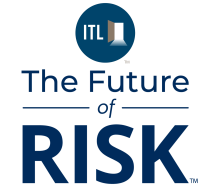The expression “empathy in insurance” is as abused and misunderstood as “innovation in insurance.” The underlying intent and value of both are important but vague. They are also contradictory at times and often misapplied by industry practitioners.
Insurance innovation began to emerge with the insurtech wave roughly a decade ago. Insurance carriers added “innovation” in job titles, opened “labs” and launched corporate venture funds attracted by the prospects of modernizing insurance. Despite these advances, outsiders and many insurance insiders appropriately viewed “insurance innovation” as an oxymoron, challenging the notion that the industry is or can be legitimately innovative. This was most evident when sincere expressions of cheerleading for true breakthroughs evoked gushing terms like “transformational,” “revolutionary” and “game-changing.”
The same can be said about the debate over empathy in insurance, including empathy in claims. Escalating this debate is the introduction of conversational AI, emergence of generative AI and opposing views on just where and how far to apply these in insurance. A popular explanation from insurance executives is that artificial intelligence should have boundaries to certain functions or in replacing people. Rather, they advocate equipping people to perform better in their jobs by automating repetitive, menial tasks so people can concentrate on more valued work. Connecting information in new ways, faster, better and cheaper while keeping humans in the loop is the popular current thinking. After all, insurance is considered a relationship business.
What Is Empathy in Insurance?
The answer to what is insurance empathy really depends on who is asked. Departments of Insurance evaluate customer service in terms of complaint volume and regulatory compliance as observed in market conduct studies. Yet there is no generally accepted standard measure for how much or how well insurers deliver empathy. The metrics associated with measuring empathy are elusive, inconsistent and focused on activities and time lines.
The JD Power 2024 Auto Claims Satisfaction Study examined auto repair cycle times which averaged 22.3 days, down one day from 2023. However, the report goes on to say that those with premium increases prior to a claim were highly unsatisfied, while those using mobile apps to file claims received scores above call centers and live agents. These may be a current example of the many contradictions and fluid criteria affecting insurance empathy.
In 2003, Fred Reichheld, while at Bain, developed the famous NPS (Net Promoter Score), which has been embraced by some of the largest companies across diverse industries. The concept focuses on customer loyalty determined by the highest survey scoring and subtracting low scoring “detractors.” In short, it’s all about keeping and attracting customers in which insurers monitor retention rates and loss of policyholders after a claim and a variety of survey findings. Yet measuring empathy delivery remains subject to assumptions or a belief more than a tangible finding.
Measuring Empathy
Elusive to measure, so-called empathetic service is best illustrated by examples and testimonials, whether through hand-holding following a home fire or battalions of adjusters descending on weather-ravaged communities to provide relief. Empathy can also be found in the everyday transaction whether during loss reporting or answering questions about recent rate increases, which can go much more smoothly with a friendly, caring touch.
However, empathy is often more complicated and dynamic. Efficiency, competence and outcomes can matter even more than the delivery itself. Consequently, insurers persistently place a high value on the potential degradation of empathy when it comes to evaluating AI more than any other previous technology. And for good reason – agentic AI has the power to replicate human judgment and the many associated functions.
One pathway to business excellence is to apply the principles of; what gets measured, gets done. JD Power also reported that the highest-ranked key performance claim service indicator involves good communication. Conversely, the top reason for claim dissatisfaction stems from customers not being informed and updated during the process. Yet adjusters, pressed for time, often default to a reactionary mode by responding to inquiries and complaints. Therefore, insurers measure things such as the speed of customer contact and claim cycle time, while empathetic delivery can only be sparsely observed and subjectively gauged.
Obstacles to Empathy
Meanwhile, claims leaders constantly strive to juggle loss costs, expenses, employee engagement and a cascade of organizational priorities. Better said, insurers strive for blended positive outcomes in which the right amount is paid with efficiency, keeping expenses contained -- all with satisfied customers.
Claim adjusters receive extensive policy coverage education, claim system and estimating software training with a heaping of technical development and customer service training during their apprenticeship-styled onboarding and often-lengthy career paths – all of this with the goal of reaching claim excellence. But empathetic claim delivery in which adjusters are tested and stretched to balance work volume, complaints and customer pressures is one of those acquired skills and remains inconsistent at best.
What does the customer want?
Large enterprises probably are the most challenged to know exactly what customers want. Layers of structure get in the way. The customer may be nearly out of sight, left to reports, spreadsheets and data augmented by marketing analytics to decipher. Insurers face additional obstacles as there are numerous uncoordinated touchpoints during a claim, including medical providers, agents, repairers, solution providers and others staking individual ownership for the customer experience.
Today’s insurance claim model is highly specialized, and a single claim can include multiple adjusters assigned, laden with handoffs and reassignments along the way. Communication channels span phone, email, text and insurer apps, clouding how empathy is experienced. All of which raises the key question of what do customers really want? This question further recognizes differences in wants and needs in a moving target scenario throughout the claim life cycle.
Redefining Empathy in Insurance
As technology advances and digital channels become more effective and commonplace, human interaction is evolving. Generational differences account for shrinking demand for live call support, especially when an automated or self-service channel is competent and efficient. Acceptance of digital-first is widespread. No need to call a taxi cab company when a few clicks of a rideshare app is much more efficient and friendly, introducing driver by name, car and license plate and live mapping pick-up time. Numerous other experiences are blending efficiency and friendliness, thus personalizing – a key ingredient in empathy. The insurance industry has already started on the path of offering digital and self-services, albeit cautiously, by providing options and soft-selling such as offering paperless and other hassle-free alternatives.
AI and Empathy
In our related article, AI Can Fix Everything in Insurance we explore the outdated claim intake process, which remains highly dependent on human touch. Yet the claim reporting process is mainly about information gathering, only to hand off to others who routinely confirm and repeat these steps. While this model can lend a human expression of empathy, it is often outweighed by a lengthy Q&A conversation – all of which is automated and can replace live agents in all but a few circumstances. Several newer insurtech entrants take a digital-first mindset and are proving effective and efficient.
Redefining empathy in insurance must consider outcomes vs methods. Such outcomes should entail efficiency and completeness of the service experience as well as the degree of confidence assessed by how far users are able to navigate the process, whether a claim, policy change or other function.
Insurance is complex, so human experts will likely remain involved for a long time. Modern systems allow for reaching or scheduling a human-to-human conversation when the customer wants/decides. But this is the opposite of today’s typical, human-first funnel throughout insurance. Although bots probably deserve a D- grade, they are now getting smarter and more capable, with conversational AI causing insurers to consider just how far to go.
Creativity in non-human interactions can go a long way in making things friendly and welcoming. Allstate recently said Gen AI communication letters were found to be superior to human-written communications because of clarity. Digital responses can and do include friendly messaging such as, “sorry for your loss” or “congratulations on your new car/home.” This is similar to how human agents are trained, with a key difference – consistency in application. Such examples tend to muddy the water in delineating value of human touch from other customer expectations of clarity and competency.
Agentic AI offers the prospect of replicating judgment. This is crucial when it comes to personalization. The P&C industry strives for more personalization when it comes to premiums, marketing products, changing coverages and knowing their customers. Sensor technology enables real-time data capture to monitor, alert and guide risk behavior, which opens the door to Predict & Prevent imperatives designed to make insurance more effective and affordable.
Our Take
Empathy is the ability to understand and share the feelings of another. Technology need not and does not displace sharing of feelings. Empathy will always be important – especially in claims – but it would be irresponsible of insurers not to leverage high-impact technology or remove humans from the process where judgment and experience are critical.
The future success of insurance depends on repositioning the industry for higher relevance to the new consumer and stakeholder alike. Redefining empathy amid exponential gains in technology is a big step forward in thoughtful and responsible use of AI in insurance.
Human touch in insurance is not going away any time soon, but your next co-worker is likely to be AI-powered.









